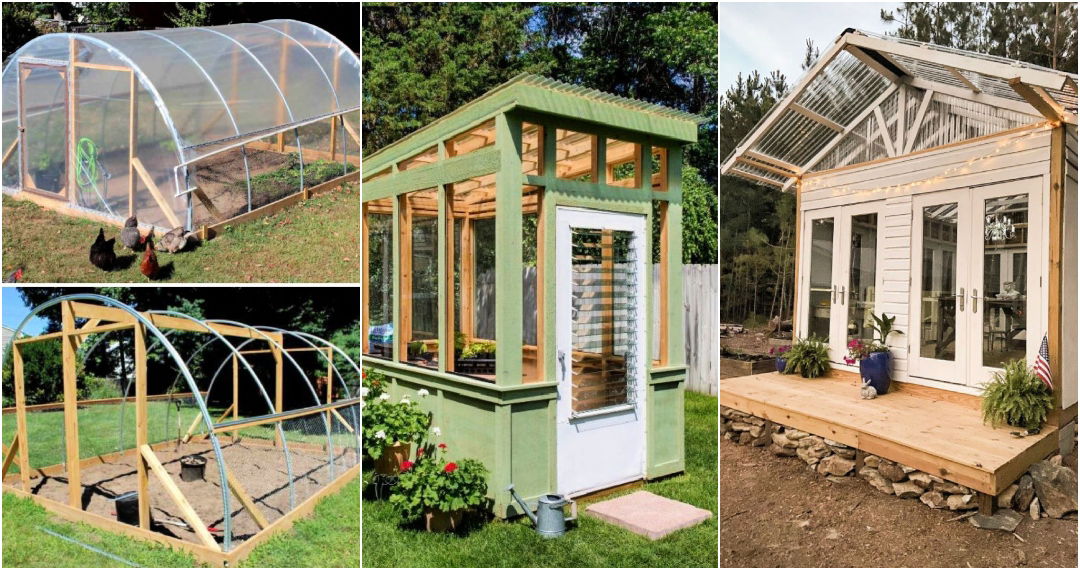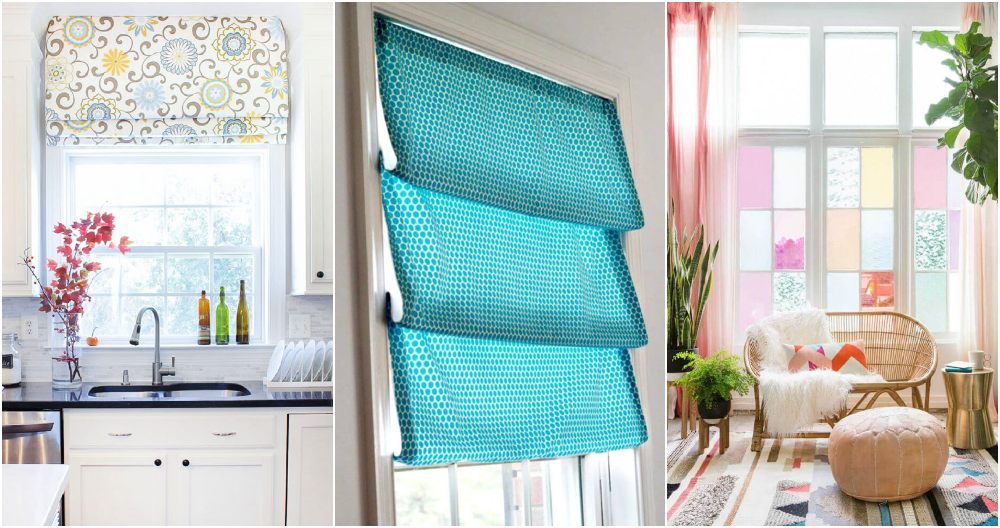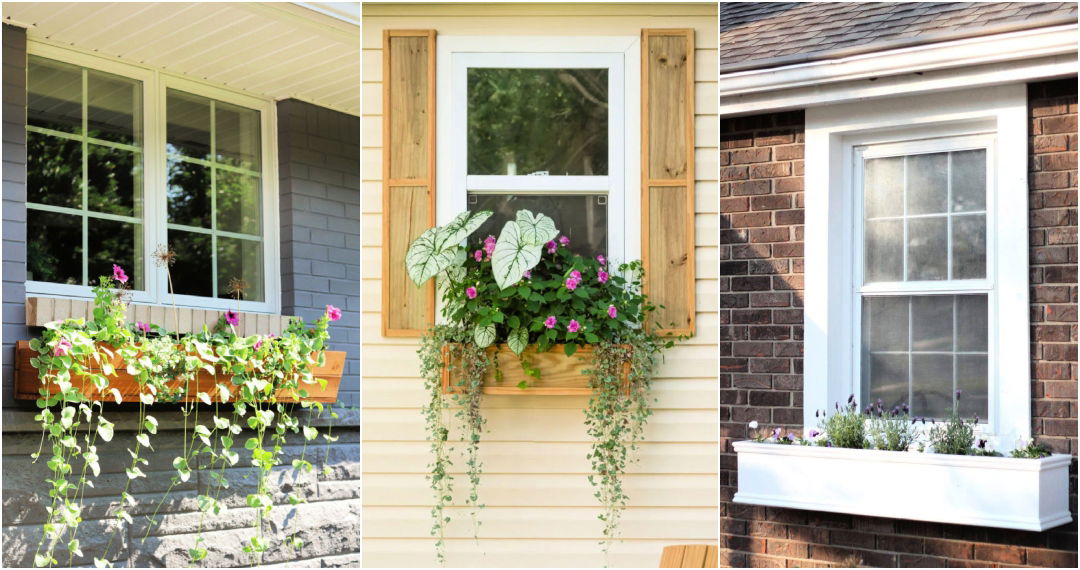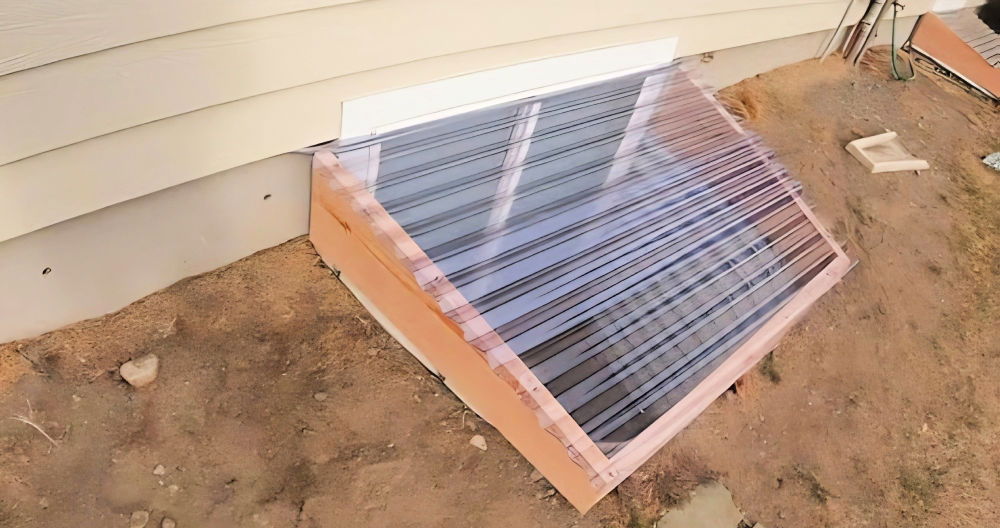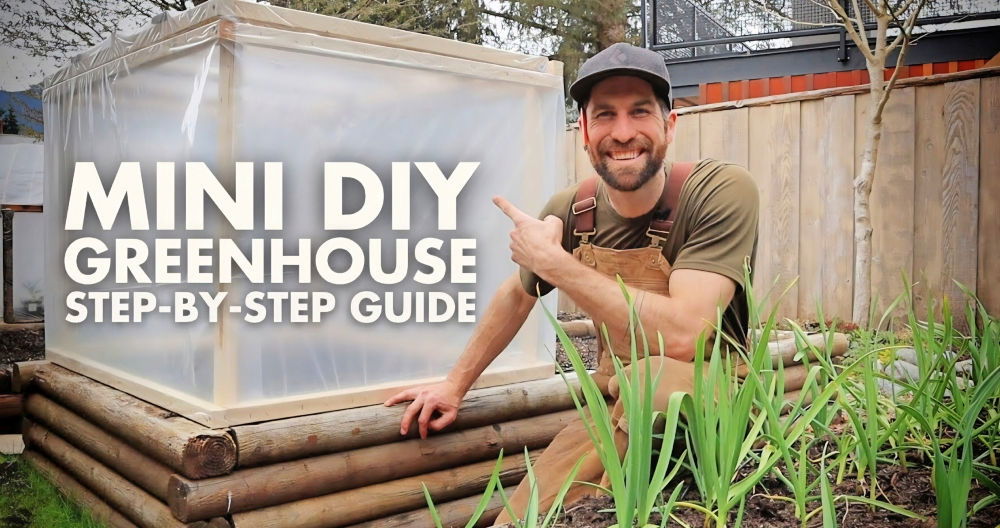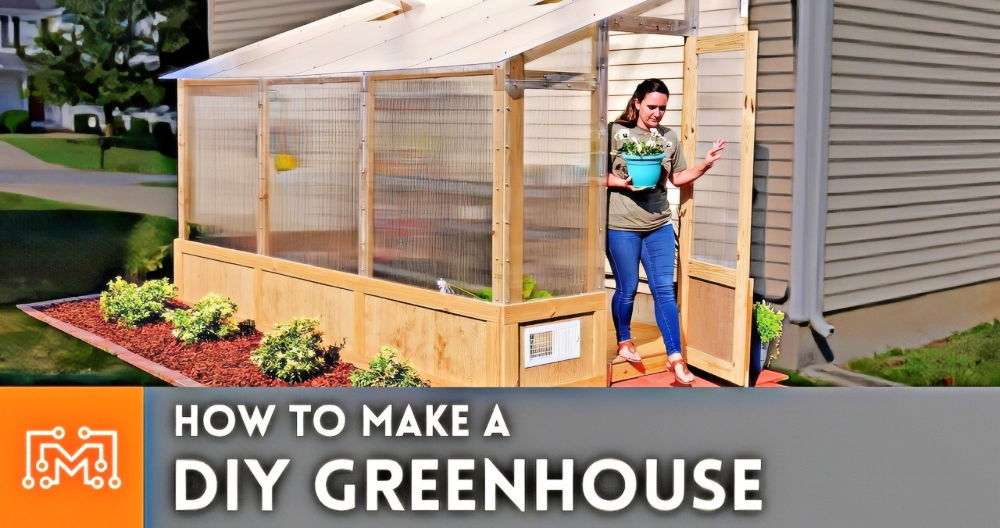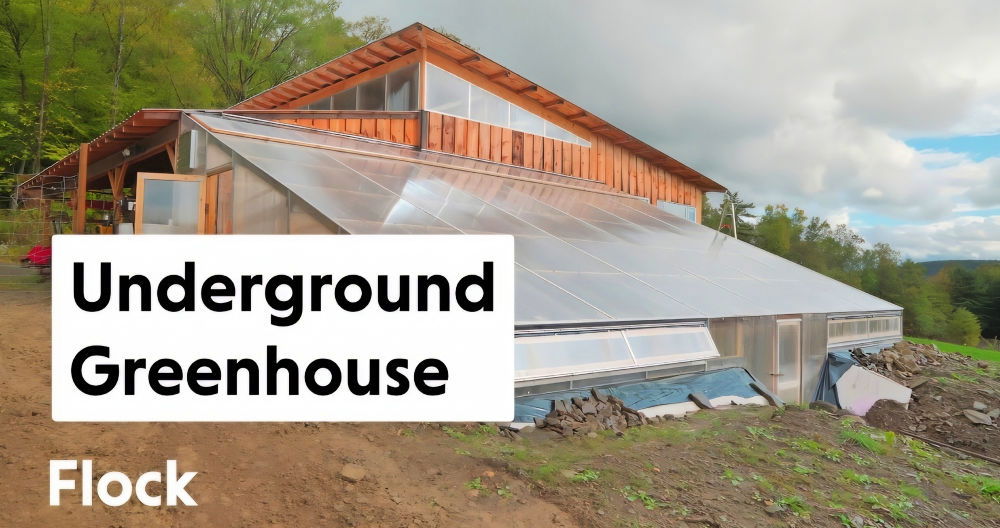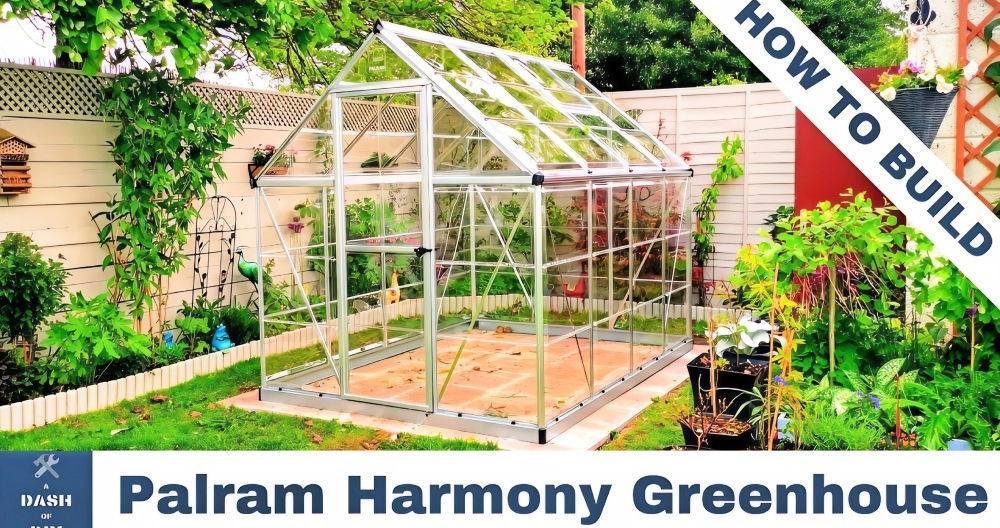Constructing a homemade DIY old window greenhouse has been one of my most rewarding projects. I gathered a bunch of repurposed windows that were lying around and started building. It amazed me how something discarded could transform into a beautiful and functional piece. This greenhouse now shelters my favorite plants and herbs, extending their growing season.
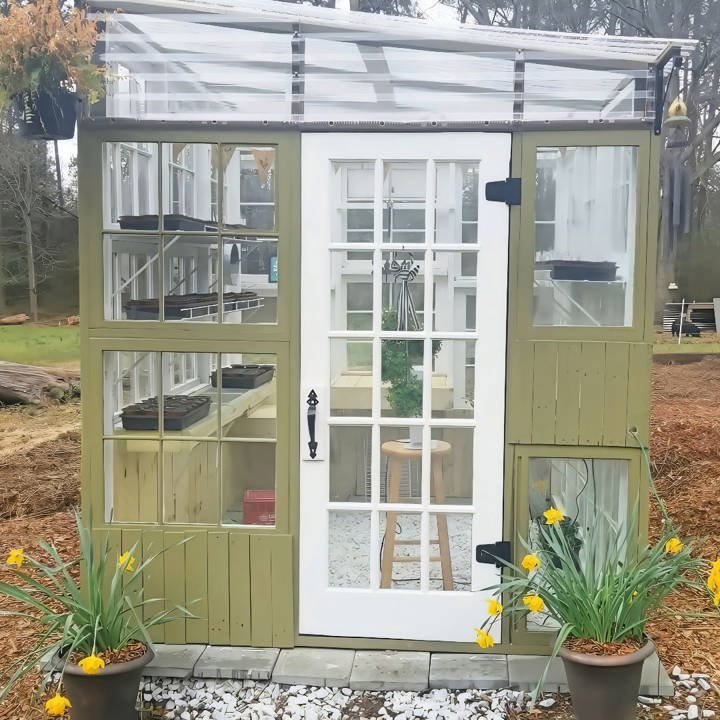
It took patience and a bit of elbow grease, but the results were worth it. Combining these old windows gave a rustic and charming look to my garden. You can do it too. Building a DIY greenhouse from repurposed materials not only saves money but also promotes sustainability.
I'm here to help you with easy-to-follow steps. Start today, and watch your garden flourish.
The Planning Phase: Materials and Measurements
The first leap into this project began with gathering materials — old windows, precisely. The appeal of using old windows for this construction was twofold; it was a lesson in recycling and a practical solution to building a budget-friendly greenhouse. These windows cost me nothing, enhancing the project's sustainability factor. The materials list extended to treated lumber for the frame, screws, clear plastic or PVC panels for the roof, and eventually, paint for a finishing touch.
Why Each Material Was Chosen:
- Old Windows: These provided an eco-friendly solution to the greenhouse's walls, allowing sunlight penetration and aesthetic pleasure.
- Treated Lumber: Opting for treated lumber ensured the frame's durability against weather conditions.
- Screws: To secure the structure — choosing high-quality screws eliminated the need for pre-drilling, making the process more straightforward.
- Clear Plastic Panels: These were selected for the roof to ensure maximum sunlight exposure.
Step by Step Instructions
Learn how to build a homemade old window greenhouse with our step-by-step instructions, from design to final touches. Perfect DIY project for garden lovers!
1. Design and Layout
The groundwork for the project involved meticulous planning. Each window was measured and marked. Laying out the design was akin to solving a puzzle — determining which window fit where to achieve a coherent structure. This phase underscored the importance of planning in DIY projects. The chosen design was a lean-to style greenhouse for its simplicity and practicality.
2. Building the Frame
Constructing the walls was the next hurdle. The process involved building each wall within the workshop before moving them to the designated greenhouse site. This method offered better control over the assembly, ensuring each section was square and level. Corners were carefully assembled, avoiding direct pressure on the window glass to prevent breakage.
3. Painting and Assembly
Choosing a color for the greenhouse became a family discussion, settling on green to mirror its purpose. The painting process was mindful of avoiding glass areas, which required precision and patience. Once painted, the walls were assembled on site. The assembly highlighted the project's communal aspect — it was a team effort.
4. Roofing
The roofing phase introduced a new material into the mix — clear plastic panels. These panels were selected to ensure the greenhouse would provide ample sunlight, essential for the growth of the plants inside. The installation was straightforward, thanks to the clear manufacturer's instructions and some ingenuity in adaptation to our specific structure.
5. Final Touches
The last steps included securing the structure to the ground, adding a door (a recycled 15-pane door fitting the aesthetic perfectly), and setting up inside shelving using repurposed materials for plant organization. Innovations like an automatic vent opener for temperature control were also installed, addressing the greenhouse's practical operations.
Customization Ideas for Your Old Window Greenhouse
Building a greenhouse from old windows not only recycles materials but also provides a personalized space for your plants to thrive. Here are some customization ideas to make your greenhouse uniquely yours:
- Choose a Theme: Decide on a theme that reflects your personality or garden's aesthetic. Whether it's rustic, modern, or whimsical, your theme can guide the selection of decorations and layout.
- Paint and Decor: Give your old windows a fresh coat of paint to match your theme. Use non-toxic, weather-resistant paint for longevity. Add decorative touches like vintage handles or patterned curtains to enhance the look.
- Functional Add-Ons: Consider installing temperature-controlled vents for better climate management. Adding rain gutters can help in water collection for your plants.
- Interior Layout: Design the interior to maximize space and sunlight. Use hanging shelves for small pots and vertical planters to grow herbs or strawberries.
- Exteriors: Attach trellises or climbing frames on the exterior for vine plants, adding both beauty and functionality.
- Lighting: Solar-powered LED lights can provide the necessary illumination for evening gardening and build a cozy atmosphere.
- Insulation: Use bubble wrap or other eco-friendly materials to insulate your greenhouse, keeping it warm during cooler months.
- Flooring: Choose a flooring material that offers drainage and is easy to clean. Gravel or brick can be both practical and attractive.
- Accessibility: Ensure that doors are wide enough for easy access, and consider raised beds or containers for comfortable gardening.
Incorporate these ideas to build a functional and creative greenhouse, reflecting your care for the environment. Ensure it's a space where both you and your plants feel at home.
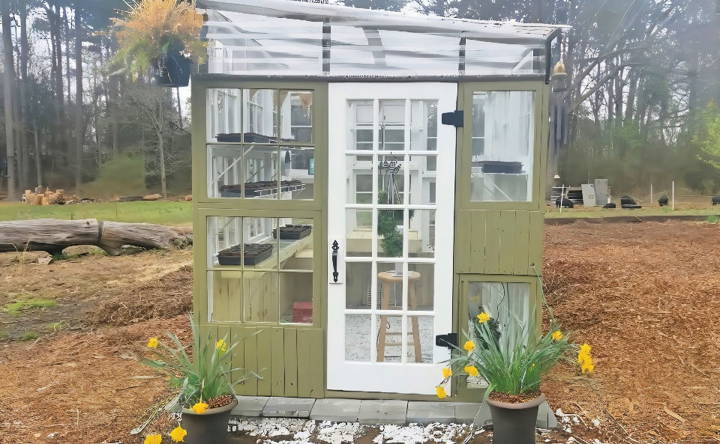
Troubleshooting Common Issues
When building a greenhouse from old windows, you might encounter a few hiccups along the way. Here's a guide to help you solve some common problems:
- Glass Breakage: Old windows often have single panes that are prone to breaking. Handle them with care, especially during transport and installation. If a pane breaks, replace it with a similar size glass or a clear polycarbonate sheet for safety.
- Structural Fit: Ensuring all windows fit together can be challenging. Measure twice and cut once. Use weather-resistant sealant to fill any gaps and ensure a snug fit.
- Roof Angle: The right roof angle is crucial for optimal sunlight. A general rule is to match the latitude of your location plus 15 degrees. Use an online angle calculator for precision.
- Rust and Rot: Check for rust on metal parts and rot in wooden frames. Treat rusted areas with a rust converter and paint over them. Replace rotted wood to prevent further damage.
- Warping: Warped frames can hinder proper window operation. If minor, you can plane the wood. For severe warping, it's best to replace the frame.
- Insect Damage: Look for signs of insect damage, like holes or sawdust. Treat the wood with an insecticide and seal it to prevent future infestations.
- Ventilation: Proper airflow is vital. Install vents or fans if your greenhouse becomes too humid or hot.
- Insulation: In colder climates, insulation is key. Use bubble wrap or foam boards to keep the warmth in during winter.
- Water Drainage: Ensure your greenhouse has adequate drainage to prevent water accumulation. Slope the floor slightly and use gravel or permeable materials.
By addressing these issues, you'll ensure your greenhouse is a sturdy and safe environment for your plants to flourish.
Maintenance Tips for Your Old Window Greenhouse
Keeping your old window greenhouse in top shape is crucial for the health of your plants and the longevity of the structure. Here are some straightforward maintenance tips:
- Regular Cleaning: Keep the glass panes clean to ensure maximum sunlight reaches your plants. Use a gentle soap and water solution to remove dirt and grime.
- Check for Damage: Inspect the window frames and glass regularly for any signs of damage. Promptly repair or replace broken panes to maintain the greenhouse's insulation.
- Sealant and Caulking: Over time, sealants and caulking can wear out. Check these areas and reapply as needed to prevent drafts and water leaks.
- Ventilation: Ensure that vents and openings are clear of debris to maintain proper airflow. This helps regulate temperature and humidity levels inside the greenhouse.
- Pest Control: Look out for pests that can harm your plants. Use natural or recommended pesticides to keep them at bay.
- Weatherproofing: Before the onset of harsh weather, make sure your greenhouse is ready to withstand the elements. Reinforce any weak structures and secure loose windows.
- Insulation Check: Insulation materials like bubble wrap should be checked and replaced if they show signs of wear. This helps keep the greenhouse warm during cooler months.
- Structural Integrity: Periodically, check the overall structure for stability. Tighten any loose screws and ensure that the foundation is secure.
- Drainage: Good drainage is essential to prevent water buildup. Make sure the floor is slightly sloped and use gravel or sand to facilitate drainage.
By following these tips, you'll ensure that your greenhouse remains a thriving environment for your plants year-round.
FAQs About Homemade Old Window Greenhouse
Discover essential FAQs about homemade old window greenhouses. Learn how to build, maintain, and maximize your DIY garden space effectively.
Select a location that receives ample sunlight throughout the day, ideally facing south. Ensure it’s sheltered from strong winds and has good drainage. Proximity to water and electricity sources is also beneficial.
Absolutely! The size of your greenhouse can be tailored to the number of windows you have and the space available in your garden. The design can be as simple as a small box to a larger structure to walk inside.
Yes, if you're short on old windows for the roof, you can use corrugated plastic panels or polycarbonate sheets. These materials allow light in and provide good insulation while being easier to install than glass.
Proper ventilation is crucial to prevent overheating and to provide fresh air for your plants. You can:
Install a vent or fan for active ventilation.
Use windows that can be opened or closed as needed.
Consider automatic vent openers that respond to temperature changes.
Keeping your greenhouse windows clean ensures maximum light penetration. For maintenance:
Wash the windows regularly with a mild soap solution.
Inspect for and repair any cracks or breaks to maintain insulation.
During winter, clear snow from the roof to allow light in and prevent damage.
Reflections and Advice
By sharing this story, I want to inspire you to try a similar project. Using old windows to build a greenhouse can build a unique and rewarding space in your garden. This guide will help you get started and make it enjoyable.


